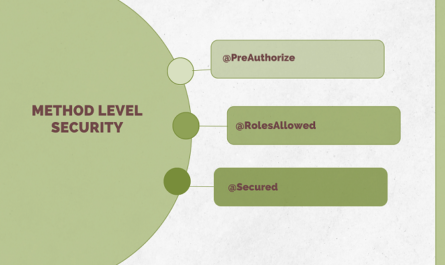A Data Transfer Object (DTO) is a design pattern used to transfer data between software application subsystems or layers. DTOs are often used in the context of developing web applications, especially when working with complex domain models and APIs. They are simple, serializable objects that encapsulate the data you want to transfer; they do not contain any business logic but merely aggregate data that needs to be sent over the network.
What is DTO Used For?
DTOs serve several key purposes in application architecture:
- Data Encapsulation: They encapsulate data and make the transfer between different application layers (e.g., from services to controllers) more straightforward and more structured.
- Reduced Network Traffic: By selectively including only the necessary data fields, DTOs can help minimize the size of the data sent over the network, improving application performance.
- Decoupling: DTOs help decouple the presentation layer from the business logic and data access layers. Changes in the database or domain model do not directly impact the API contracts, provided the DTOs remain consistent.
- Security: Using DTOs allows developers to explicitly control what data is exposed over the API, helping to prevent accidental exposure of sensitive information.
- Flexibility: DTOs can be tailored to the needs of specific client-side use cases, aggregating and structuring data from various sources in a way that’s most useful for the client.
Why Do We Need It?
- Complexity Management: In complex applications, directly exposing entities (database models) to clients can lead to tangled code and tight coupling between layers. DTOs simplify the interactions between layers, making the codebase easier to manage.
- API Stability: As applications evolve, their underlying data models often change. DTOs provide a stable interface to clients even as internal implementations change, preserving backward compatibility.
- Performance Optimization: DTOs allow for the selective transfer of data, which can significantly reduce payload sizes and improve the performance of web applications, especially in bandwidth-constrained environments.
- Security and Control: By defining DTOs, developers have fine-grained control over what data is exposed to the client, enhancing security and privacy.
Why Is It Important?
DTOs play a crucial role in building scalable, maintainable, and secure applications. They are important for several reasons:
- Separation of Concerns: DTOs support a clean separation of concerns between the application’s internal workings and the data structure used in client-server communication.
- Data Integrity and Validation: DTOs can be used to enforce data validation rules specific to each API endpoint, ensuring that only valid data is processed by the application.
- Customization and Flexibility: They allow for custom data structures tailored to specific use cases or client requirements, enhancing the flexibility of the application.
- Improved Client-Server Interaction: DTOs can simplify the data exchanged between client and server, making it easier for clients to consume services and for servers to process requests.
Conclusion
While it might seem that DTOs add extra complexity, they offer significant benefits in terms of API design, application security, and maintainability. They allow for cleaner separation of concerns, more flexible data handling, and safer evolution of your application over time. Adopting DTOs is a best practice that can help prevent many common issues in web application development, even in scenarios where sensitive data exposure is not the primary concern.

